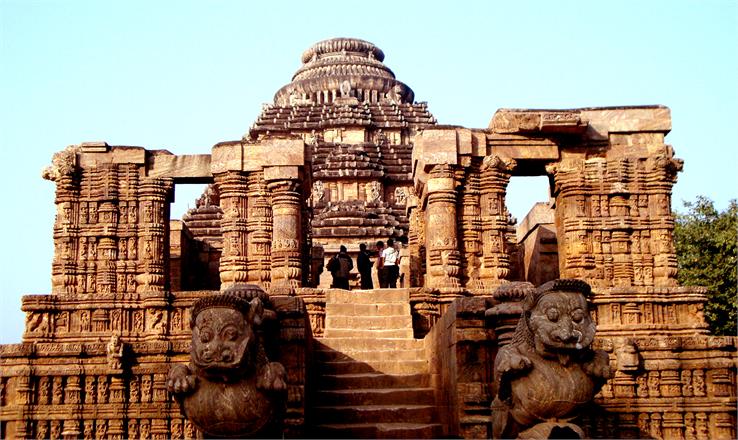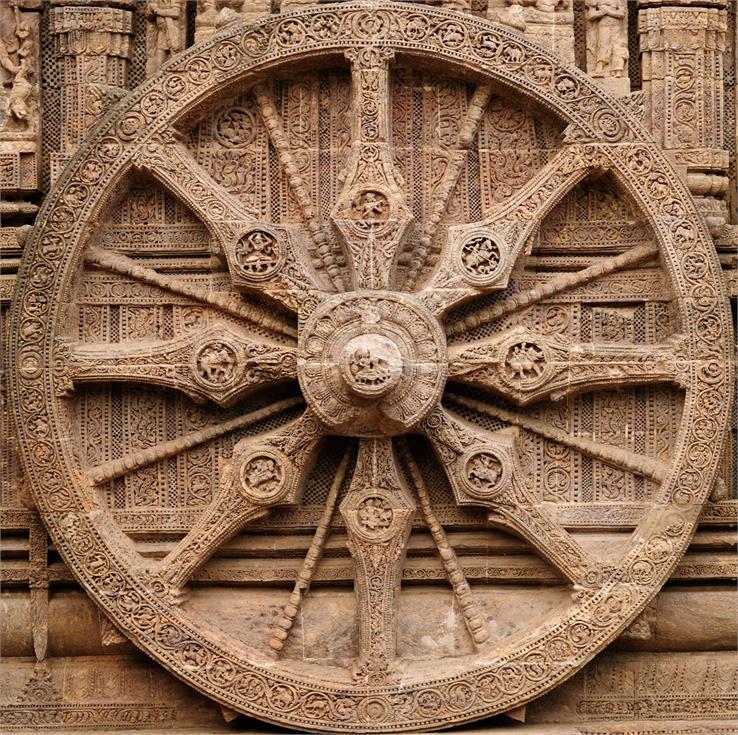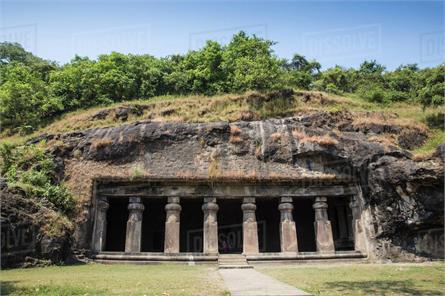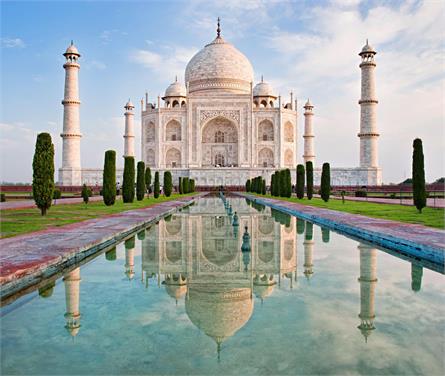Konark Sun Temple | The Chariot of the Sun God
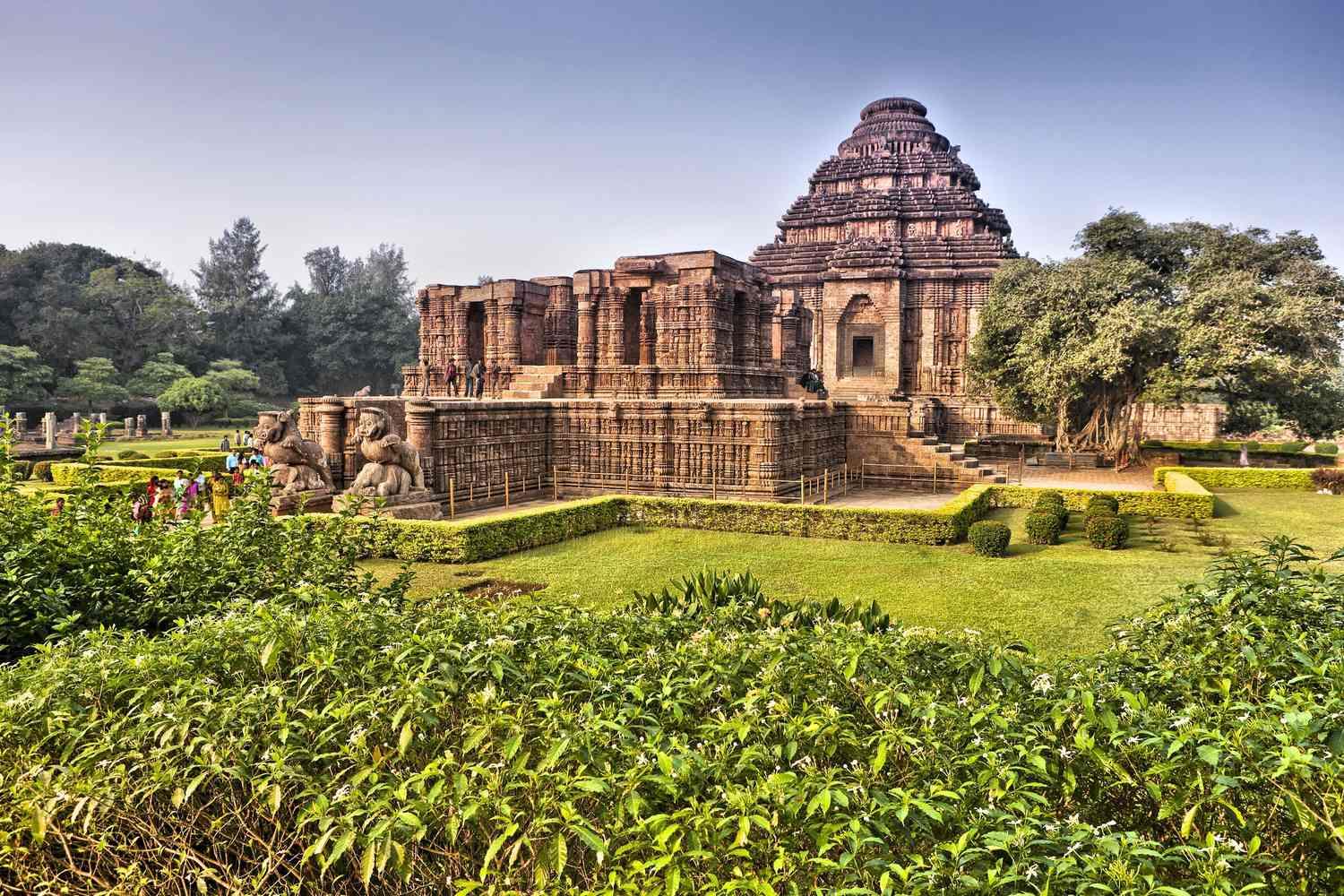
In the heart of the Indian state of Odisha lies a timeless masterpiece of architecture, art, and spirituality - the Konark Temple. Often referred to as the "Sun Temple," this awe-inspiring structure stands as a testament to human ingenuity and devotion. With its intricate carvings, celestial symbolism, and intriguing history, the Konark Temple is a treasure trove of wonder waiting to be explored. It is amazing to think about the time and effort that went into creating such a beautiful and meaningful masterpiece.
Also Read: Nalanda Mahavihara The World Heritage Site
The Sun Temple's Radiant History | Dedication for Sun God | Representation of 12 Wheels
Built in the 13th century by King Narasimhadeva I of the Eastern Ganga Dynasty, the Konark Temple is dedicated to Surya, the Sun God. It was conceived as a colossal chariot for the Sun God, complete with twelve pairs of intricately carved wheels, each representing a month of the year. These wheels not only represent the months of the year but also serve as sundials, allowing the temple to act as a colossal timekeeping device. The precise accuracy of these sundials showcases the advanced astronomical knowledge possessed by the temple's architects.
This grand architectural marvel was designed to capture the first rays of the rising sun and harness the energy of the sun for the temple's sanctum.
Also Read: Taj Mahal The World Heritage Site In India
Symbolism in Stone
The carvings on the Konark Temple are ornamental and deeply symbolic. The erotic sculptures adorning the temple walls are often misinterpreted as mere sensuality. However, they are believed to symbolize the cycle of life, from creation to destruction, with the Sun God as the ultimate source of all life.
Decline and Restoration
Over the centuries, the Konark Temple fell into disrepair due to various reasons, including invasions, weathering, and neglect. The main sanctum, once housing the colossal statue of Surya, eventually collapsed. However, extensive restoration efforts have been made to preserve this architectural wonder. UNESCO recognized the Konark Sun Temple as a World Heritage Site in 1984, which has further accelerated its conservation.
The Konark Temple continues to attract visitors from around the world, offering a captivating blend of history, art, and spirituality. The temple complex also includes a museum that houses sculptures and artifacts discovered during its restoration.
Also Read: The Architectural Work of Le Corbusier
Mystical Architecture
The architectural brilliance of the Konark Temple is nothing short of mesmerizing. The temple was constructed using a unique combination of magnetized iron and khondalite rocks, which were brought from the nearby Chandrabhaga River. The temple's exterior walls are adorned with an astonishing array of intricate sculptures and carvings, depicting various aspects of life, mythology, and the celestial heavens. The level of detail and artistry in these carvings is astounding and has earned Konark the title of "Black Pagoda" due to its dark-colored stone.
Also Read: A Historical Tapestry of Ajanta Caves
Symbolism and Mythology
The sculptures on the Konark Temple walls are not just decorative; they are laden with symbolism. Some of the most famous sculptures depict erotic scenes, often misunderstood by visitors. These sculptures are believed to symbolize the cycle of life and the creative force of the Sun God, who is the ultimate source of all life on Earth.
Also Read: The Majestic Agra Fort
Decline and Rediscovery
Over the centuries, the Konark Temple faced various challenges, including invasions, natural calamities, and neglect. The main sanctum, which once held a colossal image of Surya, eventually collapsed. However, in the 19th century, the British carried out significant restoration work, recovering many of the temple's magnificent sculptures.
The Konark Temple remains a testament to the resilience and cultural significance of India's ancient architectural heritage. It continues to be a place of reverence and wonder, attracting visitors and scholars from around the world.
Mysteries of Konark Sun Temple
The Konark Sun Temple has sparked several mysteries and questions that continue to intrigue historians, archaeologists, and enthusiasts. Here are some of the mysteries and unresolved aspects of the Konark Sun Temple:
1. Alignment with the Sun
One of the most fascinating mysteries surrounding the Konark Temple is its precise alignment with the east-west axis. The temple is designed in such a way that the first rays of the rising sun are believed to pass through the main entrance and hit the sanctum sanctorum. However, the exact scientific and astronomical knowledge possessed by the temple's builders, and how they achieved this alignment with such precision, remains a mystery.
2. Lost Main Deity
The original main deity of the Konark Temple was a colossal statue of Surya, the Sun God. This statue has been lost to history, and its whereabouts are unknown. The mystery surrounding the fate of this statue and the circumstances of its disappearance remain unsolved.
3. Lost Temple Complex
Historians believe that the Konark Temple was once part of a larger temple complex, but many of its structures have been lost over time. Efforts to locate and excavate these structures are ongoing, and their discovery could shed light on the temple's history and purpose.
Myth of Konark Sun Temple
One of the most famous myths associated with the Konark Sun Temple involves its creation and the legend of its builder, King Narasimhadeva I of the Eastern Ganga Dynasty. According to the legend:
1. The Curse of Dharmapada
King Narasimhadeva I decided to build the grand Konark Sun Temple as a symbol of his devotion to the Sun God, Surya. However, the construction of the temple faced numerous challenges. The main architect of the temple was Bisu Maharana, who was renowned for his skill.
Bisu Maharana had a twelve-year-old son named Dharmapada, who was also very talented. It is said that Dharmapada was responsible for carving the intricate details and sculptures on the temple. However, there are different versions of the story, and in some, it is mentioned that Dharmapada was the chief architect himself.
2. The Mythical Black Stone
As the temple construction progressed, there was a massive, uncarved black stone that was to be placed as the crowning element of the temple. It was said to be so heavy and large that no one knew how to place it atop the temple structure.
3. Dharmapada's Sacrifice
In some versions of the story, Dharmapada made a pact with the other workers. He agreed to sacrifice himself by leaping into the sea with the black stone, ensuring it would not remain incomplete. In doing so, Dharmapada became a legendary figure associated with the temple's completion.
4. The Redemption of King Narasimhadeva
It is believed that after Dharmapada's sacrifice, the temple was finally completed. The Sun God, Surya, was pleased with the devotion and sacrifice of Dharmapada and granted his blessings to the temple. King Narasimhadeva was redeemed, and the temple became a symbol of his devotion and penance.
This myth of Dharmapada's sacrifice and the completion of the Konark Sun Temple is a powerful and enduring legend that adds to the temple's mystique and cultural significance. It reflects the idea of human devotion and sacrifice in the pursuit of divine worship and artistic achievement.
The history of the Konark Temple is a captivating journey through time, filled with legends, artistic achievements, and spiritual significance. Its enduring presence on the eastern coast of India serves as a reminder of the remarkable capabilities of ancient Indian architects and artisans. Visiting this magnificent temple is not just a trip through history; it's an opportunity to connect with the cultural and spiritual roots of India and to appreciate the architectural marvels of the past.


